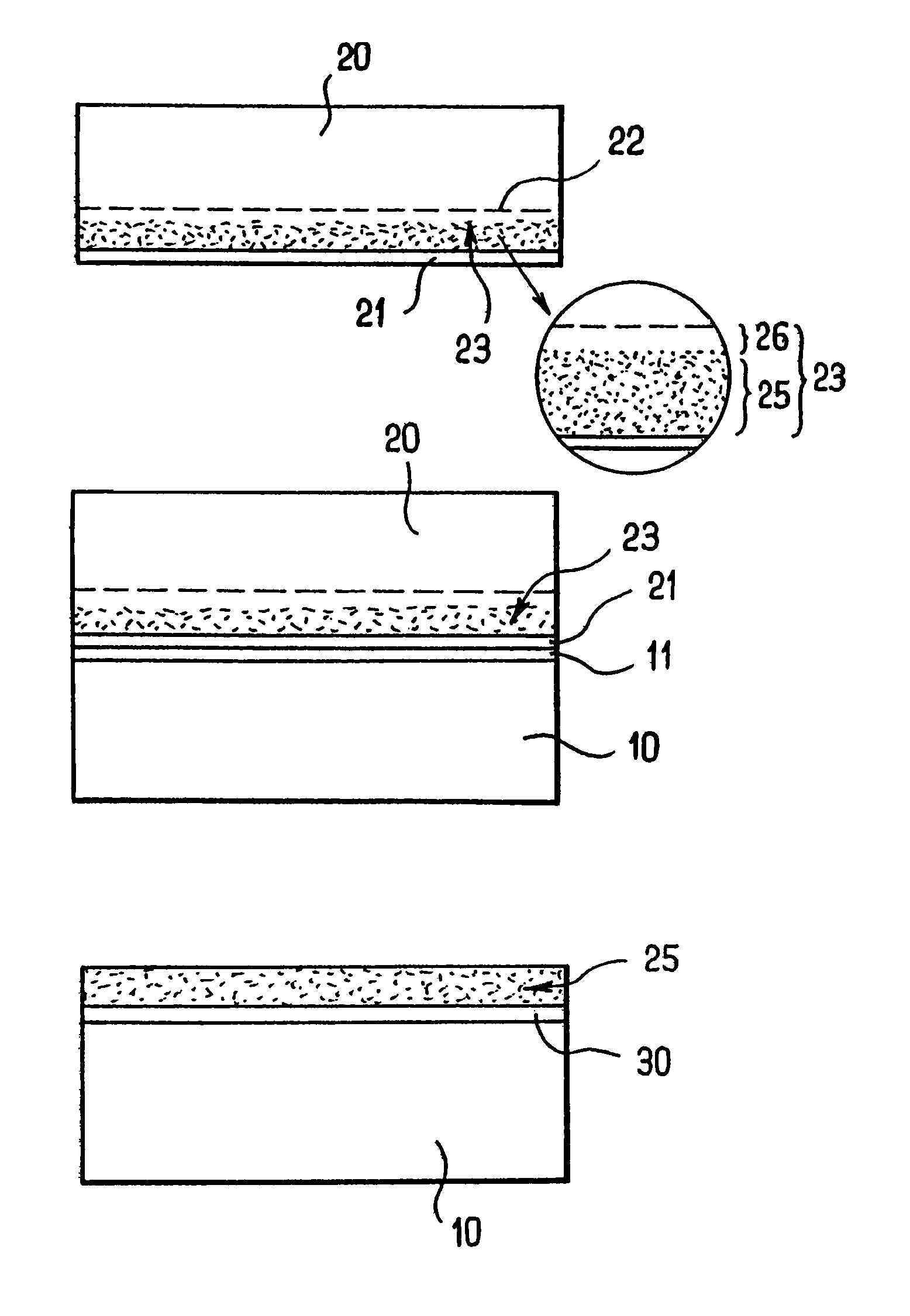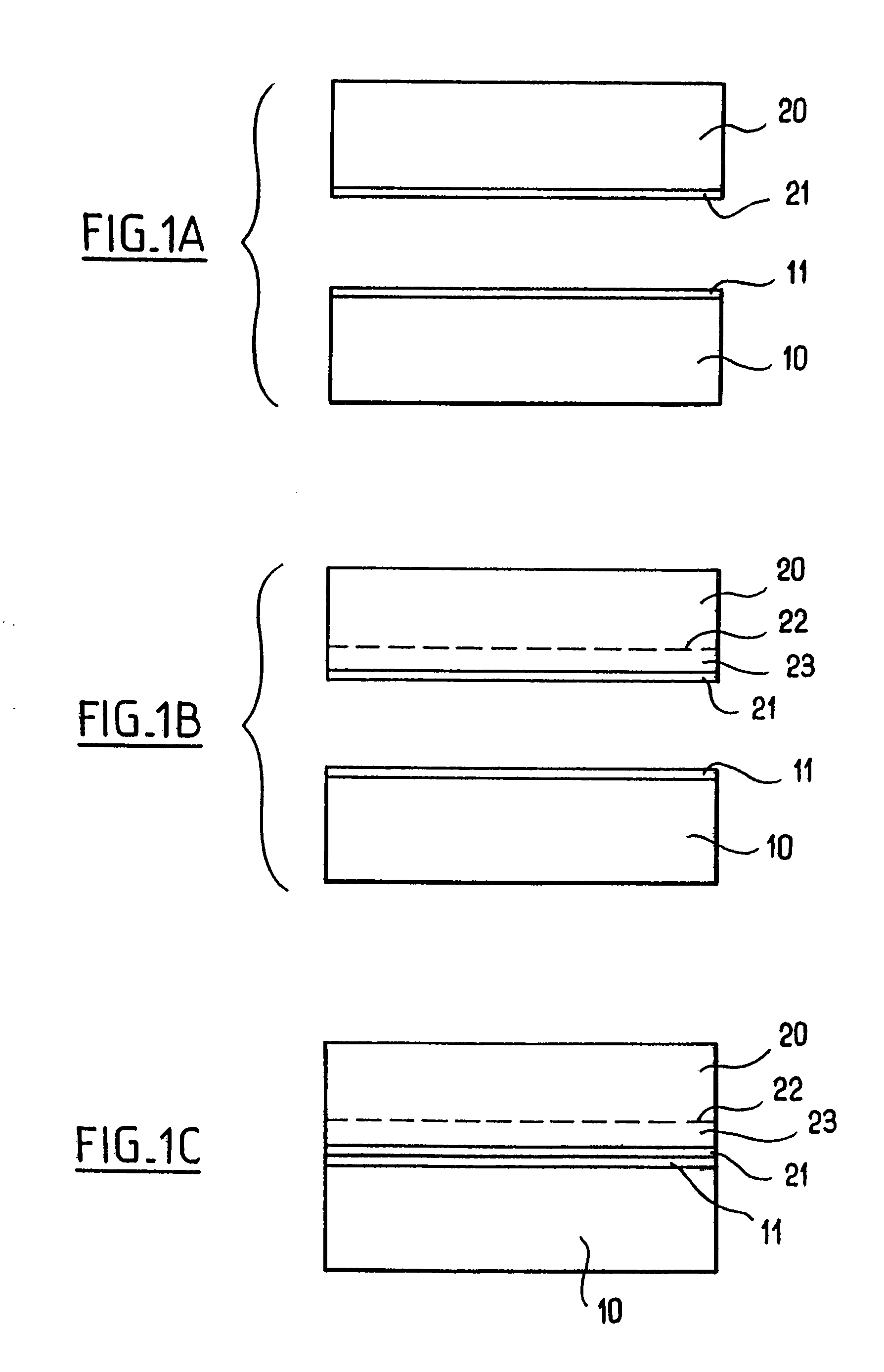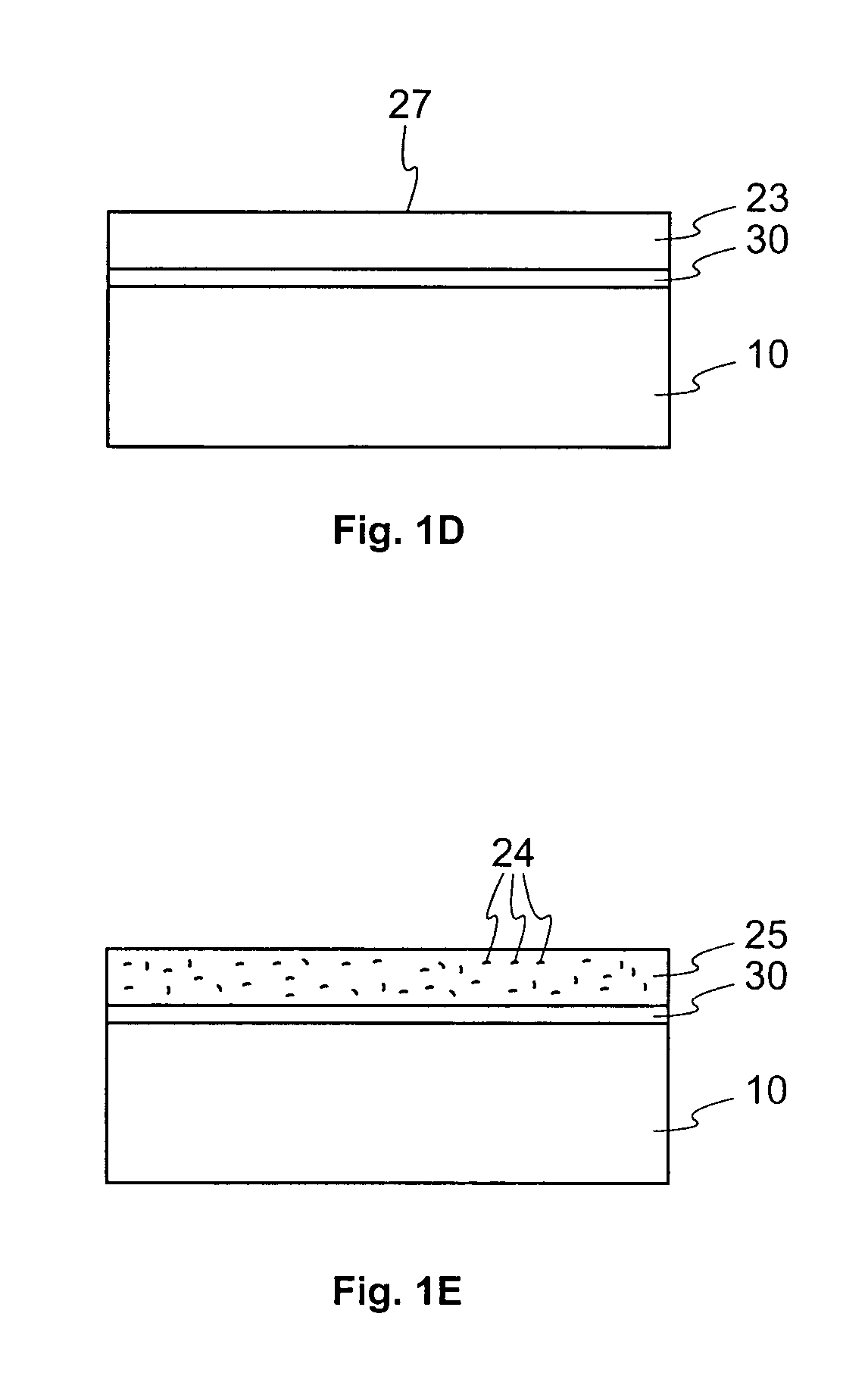Wafer and method of producing a substrate by transfer of a layer that includes foreign species
a technology of transfer layer and substrate, which is applied in the direction of basic electric elements, semiconductor devices, electrical equipment, etc., can solve the problems of large production cost, difficult production of large inp crystals, and heterostructures that cannot be obtained by epitaxy alone, so as to achieve greater uniformity and controllability.
- Summary
- Abstract
- Description
- Claims
- Application Information
AI Technical Summary
Benefits of technology
Problems solved by technology
Method used
Image
Examples
Embodiment Construction
[0029]Although studies have demonstrated the favorable role played by the presence of dopants or impurities in the material on the coalescence kinetics of implanted species prior to cleavage, the Applicant has discovered that iron acts differently, probably by modifying the migration kinetics of hydrogen during implantation then during annealing. This means that the selection of implantation conditions (dose, energy, temperature) and annealing conditions (duration, temperature) becomes much more difficult. Further, the roughness of the free face of the transferred layer following detaching is increased, thus increasing the polishing work and producing a material loss which harms the industrial efficiency and the economics of the method.
[0030]To overcome this, in a first aspect, the invention provides a method of producing a substrate comprising a transfer crystalline layer transferred from a donor wafer onto a support. The transfer layer includes one or more foreign species intended...
PUM
 Login to View More
Login to View More Abstract
Description
Claims
Application Information
 Login to View More
Login to View More - R&D
- Intellectual Property
- Life Sciences
- Materials
- Tech Scout
- Unparalleled Data Quality
- Higher Quality Content
- 60% Fewer Hallucinations
Browse by: Latest US Patents, China's latest patents, Technical Efficacy Thesaurus, Application Domain, Technology Topic, Popular Technical Reports.
© 2025 PatSnap. All rights reserved.Legal|Privacy policy|Modern Slavery Act Transparency Statement|Sitemap|About US| Contact US: help@patsnap.com



